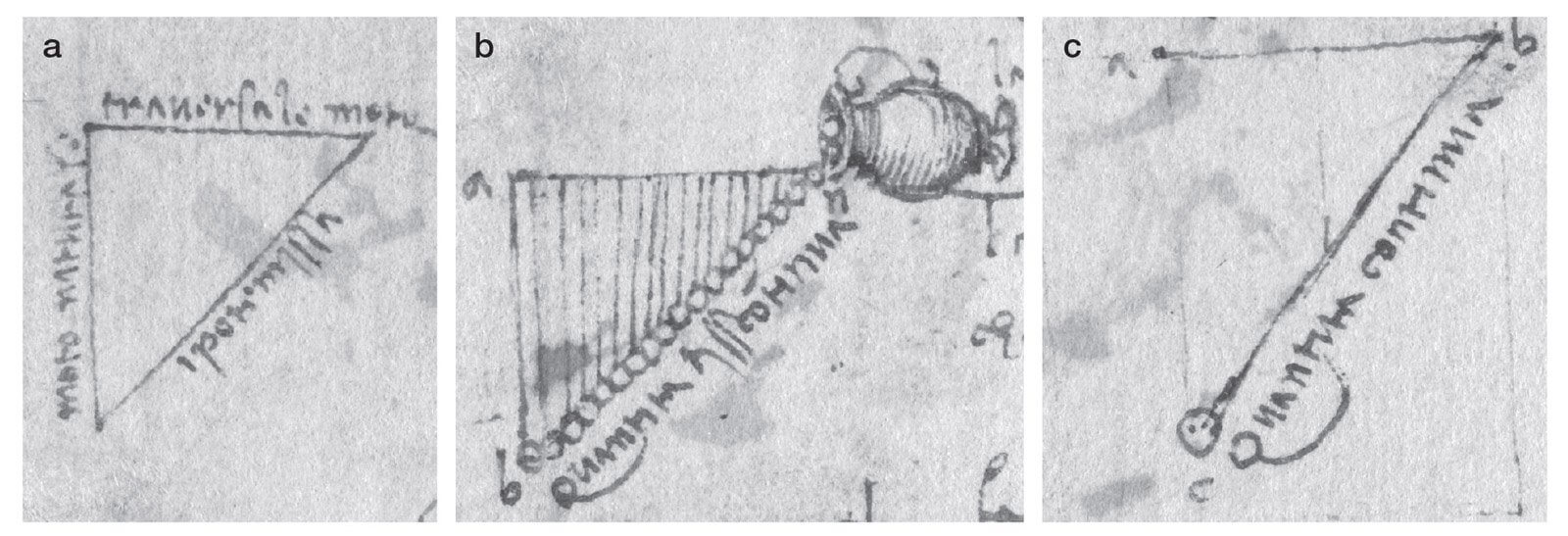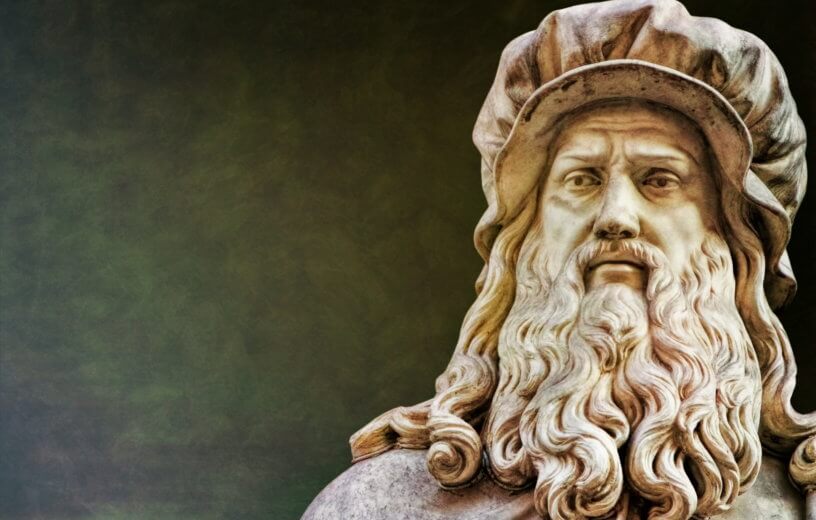PASADENA, Calif. — Leonardo da Vinci is famous for his expressive paintings of the Mona Lisa and The Last Supper, but he was more than just a curious artist. New research by a team at Caltech shows that da Vinci was trying to push the boundaries in the world of science as well. Collections of da Vinci’s notebooks are revealing his groundbreaking musings on the basic theories of physics.
While he was not entirely accurate, it would take another hundred years after his death before Galileo Galilei would make a major breakthrough in the field. Some drawings show the great da Vinci wasn’t that far off from the truth. In the new study, the researchers reexamined one of his notebooks and found that he came pretty close to modeling the gravitational constant correctly.
The famed da Vinci lived from 1452 to 1519, centuries before great physicists such as Isaac Newton and Albert Einstein. He also lived in a time when there were limited tools available to measure time as objects fell. Still, Da Vinci was able to create experiments testing gravity as a form of acceleration and was 97 percent accurate in his model of the gravitational constant, according to the Caltech researchers.
Researcher stumbled upon da Vinci’s equation by accident
The interest to dive into da Vinci’s work was a coincidence. Mory Gharib, the Hans W. Liepmann Professor of Aeronautics and Medical Engineering at Caltech, was rummaging through some papers from da Vinci for a graduate course he was prepping to teach. In this interdisciplinary collection, Gharib noticed a series of sketches showing triangles created from sand-like particles coming out of a jar.
“What caught my eye was when he wrote ‘Equatione di Moti’ on the hypotenuse of one of his sketched triangles—the one that was an isosceles right triangle,” says Gharib, lead author of the study, in a university release. “I became interested to see what Leonardo meant by that phrase.”

Gharib collaborated with his colleagues to decipher the diagrams in this physics edition of the da Vinci code. The translated papers discuss da Vinci’s experiment, where a water pitcher would move along a straight path parallel to the ground, dumping out water or a granular material like sand along the way. His notes suggest he knew that the water or sand would not fall at a constant velocity. Instead, it seems da Vinci was aware that the material would stop accelerating horizontally as it was no longer influenced by the pitcher with the acceleration being downward due to gravity.
Da Vinci’s reasoning was that if the water pitcher moved at a constant speed, the line made from the falling material is vertical, forming no triangle. However, if the pitcher accelerated at a constant rate, the line made from the collection of falling material would create a straight but slanted line resembling a triangle. In one of his key diagrams, da Vinci theorized the pitcher’s motion is accelerated at the same time gravity is accelerating the falling material. This, in turn, created an equilateral triangle which he noted with the phrase “Equatione di Moti,” or “equalization (equivalence) of motions.”
The notes prove da Vinci was ahead of his time
After figuring out that gravity is a form of acceleration, da Vinci sought to describe this in a mathematical equation. This is also the point where da Vinci fumbled with the algorithm. A computer model replicated da Vinci’s water vase experiment which pointed out his error.
“What we saw is that Leonardo wrestled with this, but he modeled it as the falling object’s distance was proportional to 2 to the t power [with t representing time] instead proportional to t squared,” explains Chris Roh, an assistant professor at Cornell University. “It’s wrong, but we later found out that he used this sort of wrong equation in the correct way.” In his notes, da Vinci illustrated an object falling for up to four intervals of time—a period through which graphs of both types of equations line up closely.”
We don’t know if da Vinci ever tried to figure out his mistake — or if he knew he made one in this instance. Maybe he left his notebook collecting dust on a bookshelf, satisfied that he cracked the mystery. No matter the outcome, Gharib says that creating this type of experiment to solve the problem “demonstrates just how far ahead his thinking was.”
The study is published in the journal Leonardo.

